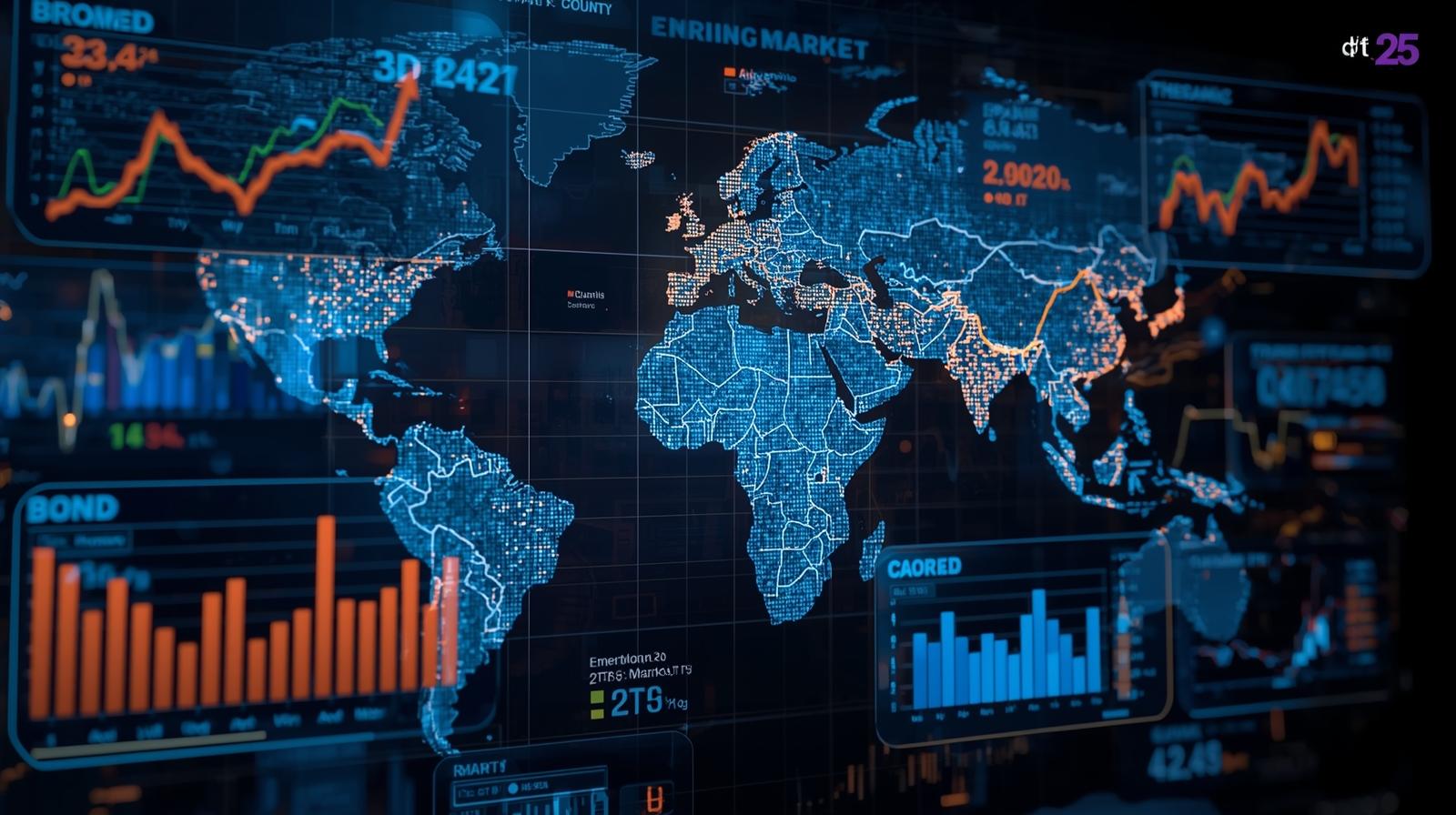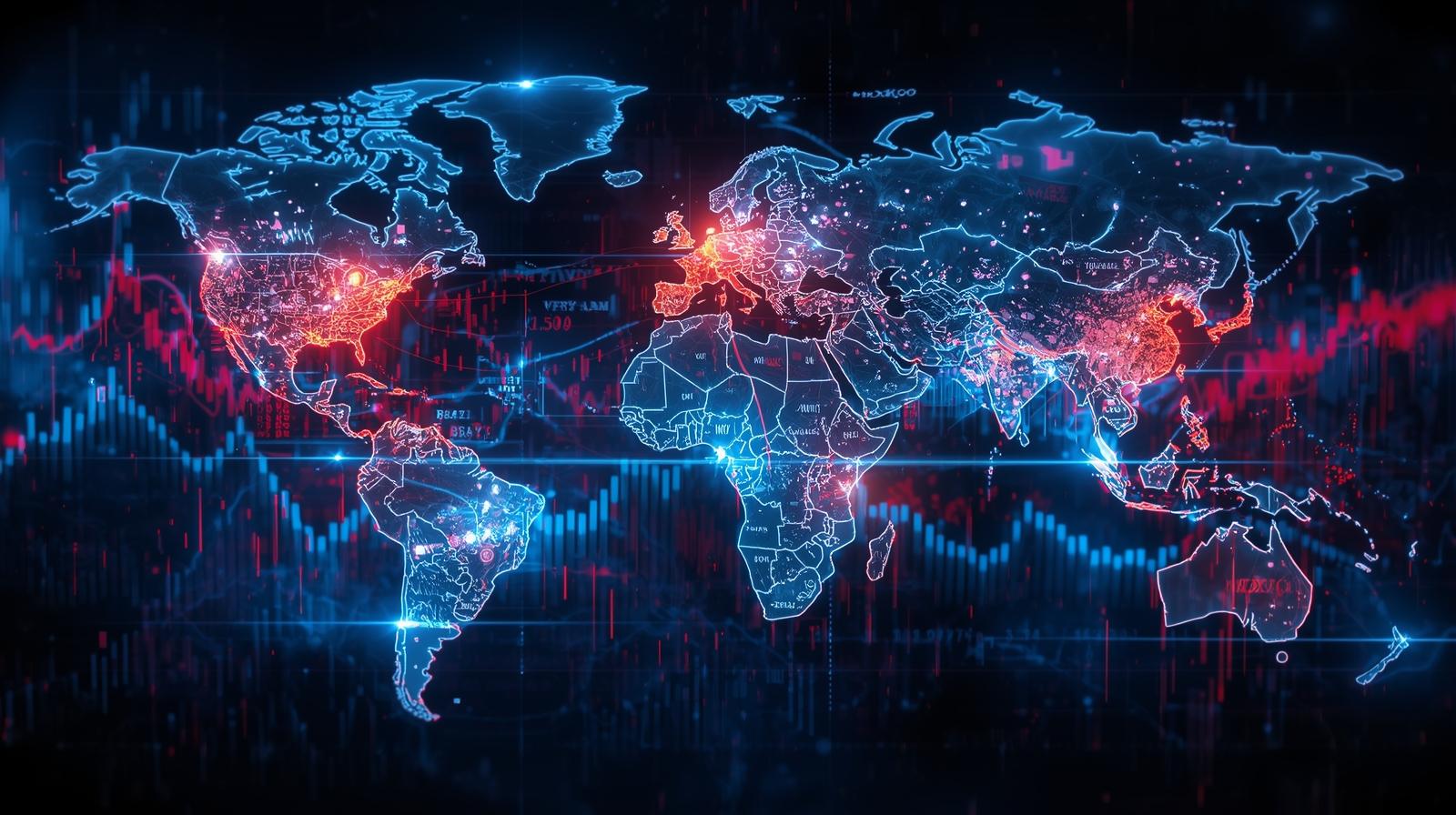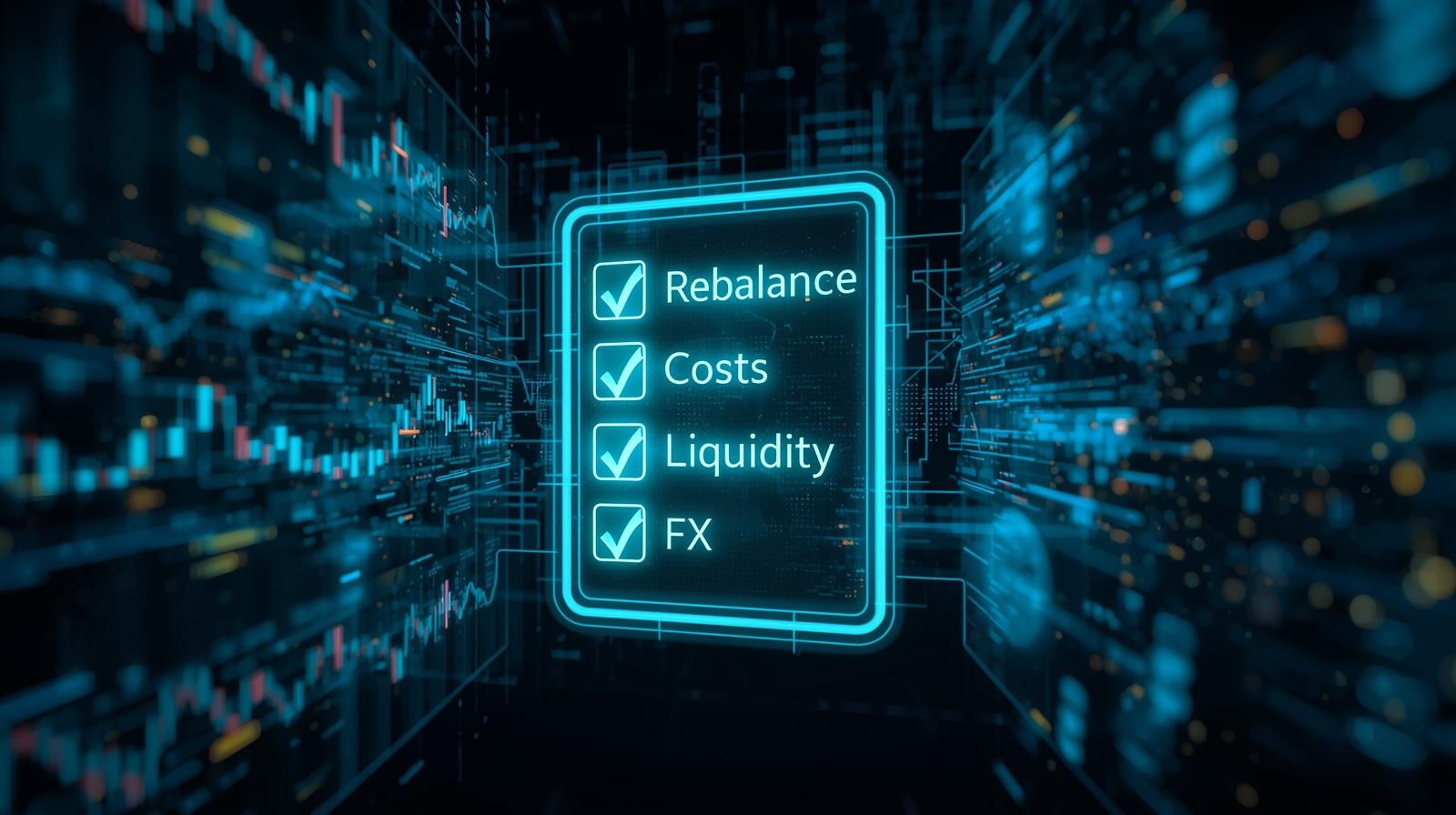Executive Summary (Q4 2025)
With global policy rates plateauing and the U.S. dollar range-bound, Q4 2025 is a constructive window to build or rebalance emerging-market (EM) exposure via ETFs and funds. Broad market ETFs offer low-cost beta, while regional, single-country, factor, and thematic vehicles help investors express macro and structural views—nearshoring in Mexico, digital scale in India and SE Asia, and energy-transition metals across LatAm/Asia. On the fixed-income side, stabilizing inflation supports EM local-currency debt while USD sovereign/corporate ETFs provide simpler duration and credit access.

Why Use ETFs & Funds in EM Now
- Diversification: Reduce single-name and governance risk across countries/sectors.
- Cost & Liquidity: Tight spreads and transparent fees vs. many active vehicles.
- Precision: Target nearshoring (Mexico), EV supply chain (Indonesia/LatAm), or quality factor tilts.
- Implementation: Easy sizing, rebalancing, and risk control across equity, bond, and currency exposures.
Core Building Blocks (Equity)
Broad EM Beta
Use cap-weighted broad market ETFs as the spine of allocation. Look for low expense ratios, strong secondary-market liquidity, and country caps that avoid over-concentration. Tracking difference over 12–24 months matters more than headline TER when markets are volatile.
Regional & Single-Country
- Asia ex-Japan: Captures India/SE Asia growth; useful if you want to reduce LatAm/EMEA cyclicality.
- Latin America: A geared way to express commodities and nearshoring (Mexico, Brazil).
- India / Mexico / Indonesia / Brazil / Vietnam: Single-country ETFs let you size conviction trades; pair with a risk budget and rebalance rules.

Factor Tilts
Quality (high ROE, low leverage) historically smooths EM drawdowns; Value helps in Brazil and cyclical recoveries; Low Vol can dampen FX-induced swings. Combine factors with a 60/30/10 blend (Quality/Value/Low-Vol) and review quarterly.

Thematic
- EV & Batteries: Indonesia (nickel), Korea/Taiwan supply chains, LatAm lithium/copper exposure.
- Digitalization: India IT/services, LatAm fintech, SE Asia e-commerce/logistics.
- Clean Energy/ESG: Renewables developers, grid equipment, green-bond funds.
Fixed-Income ETFs & Funds
USD Sovereign/Corporate
Stabilized U.S. rates and moderating spreads support hard-currency exposure. Prefer diversified sovereign baskets with prudent duration (6–8y) and avoid over-weights to stressed credits. In corporates, focus on banks and utilities with robust FX buffers.
Local-Currency Debt
Real carry remains compelling in MXN, IDR; duration rallies are possible where disinflation persists. Watch index methodology (China/India inclusion), withholding tax, and roll-down effects. A 50/50 split between local and USD bonds balanced against your base currency is a practical starting point.

ESG/Green Bonds
Green/social/sustainability funds diversify rate exposure and attract sticky capital. Check use-of-proceeds transparency and second-party opinions to reduce greenwashing risk.
Implementation Playbook (Q4 2025)
- Core Beta (40–50%): Low-cost broad EM equity ETF.
- Regional/Country (20–25%): India + Mexico core, Indonesia/Brazil tactical, Vietnam satellite.
- Factors (10–15%): Quality as default; add Value/Low-Vol based on risk budget.
- Thematics (10–15%): EV/batteries, digital finance, clean-energy grids.
- Bonds (20–30%): 50/50 USD sovereign/corp + local-currency; duration 5–7y; use laddering ETFs to stage reinvestment.
Rebalancing, Costs & Risk Controls
- Rebalance: Calendar-quarter or 5% threshold; harvest winners (e.g., MXN rally) into core beta.
- Costs: Look beyond TER—check tracking difference, securities lending, and creation/redemption spreads.
- Liquidity: Use limit orders near NAV; avoid thinly traded local-only funds at market open/close.
- FX: If base currency is USD/EUR, size local-currency bond ETFs accordingly; consider partial hedges in event risk windows.

Country Notes for Q4 2025 ETF Users
- India: Quality/financials/IT leadership; expect steady earnings breadth. Use factor overlay rather than pure small-cap beta.
- Mexico: Nearshoring beneficiaries across industrials/REITs; MXN carry supports total return—mind policy headlines.
- Indonesia: EV-metal cycle levered; pair equity exposure with local-bond ETF to balance commodity volatility.
- Brazil: Value exposure via exchanges/retailers; duration trades in local bonds—watch fiscal updates.
- Vietnam: Tactical growth; liquidity can be episodic—size position modestly.
Due Diligence Checklist (Before You Click “Buy”)
- Index provider, methodology (free float caps, China/India weight, FX conventions)
- 3-year tracking difference vs. benchmark; creation/redemption basket transparency
- Country/sector concentration limits; derivatives usage policy
- Withholding taxes, dividend schedules, securities-lending revenue split
- For bond ETFs: duration, credit bucket, liquidity screens, roll/convexity
Model Portfolios (Illustrative)
Balanced EM Multi-Asset (USD base)
- 35% Broad EM Equity
- 10% India Equity / 7% Mexico Equity / 5% Indonesia Equity / 3% Brazil Equity
- 10% Quality Factor / 5% Thematic (EV or Digital)
- 12.5% USD EM Bonds / 12.5% Local-Currency EM Bonds
- 5% Cash/T-bill buffer for rebalances
Key Risks (Q4 Watchlist)
- USD spike: hurts local-currency ETFs; hedge tactically with DXY-positive proxies.
- Commodity shock: oil spike reprices inflation; rotate to quality/low-vol factors.
- Liquidity air-pockets: use staged orders; avoid thin funds on headline days.
- Policy reversals: fiscal slippage (Brazil), regulation (select EM tech), capital controls (frontier).
Conclusion (Q4 2025)
Q4 2025 favors a core-satellite approach: anchor allocations with low-cost beta, express convictions via India/Mexico/Indonesia country sleeves and quality factor, and complement with EM bond ETFs for carry and duration balance. Keep a disciplined rebalance rule and a small cash sleeve to buy dips into 2026.
Leave a Reply